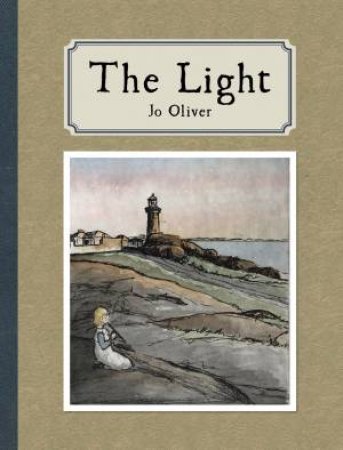There is a romance that surrounds lighthouses. They are often situated, necessarily, in isolated and spectacularly extreme locations — and their solitary warning beams have been the saviours of sailors. The history of heroic endurance among lighthouse families is central to Jo Oliver’s homage to the eighteenth-century lighthouse on tiny Montague Island off the south coast of New South Wales.
Her finely coloured solar plate etchings, which incorporate sketches of old photographs and scenes from the past, are naïve in the manner of a child’s drawing. But they are judged finely for balance, airiness, and to convey a feel for the sublime scenery of island living. The colour palette is taken from the original drawings for the construction of the lighthouse, these drawings are included on the endpapers. We see the bearded lighthouse keeper playing the fiddle in his braces, the children tending to the cow and chickens, the churning of butter and the learning of lessons in their tiny kitchen. Louisa, the young daughter, narrates a simple story of daily tasks with an account of a famous storm coming through one night. While the family kept themselves cosy playing jigs in one small room of their cottage, the wind and waves took a boat down. Four survivors got ashore, and seeing the lighted cottage window, they came to the door for help. Louisa records the lengths the family went to in drying, feeding, and comforting these half-drowned travellers—these boat people. Meanwhile the thin beam of steady light from the lighthouse outside in the storm comes to signify the open hearts of the keeper’s family.
For a contemporary audience, the small human incident of Christian charity recorded in Jo Oliver’s book is a gentle and beautiful reminder of what it means to welcome those less lucky than we have been, including those boat people who have been seeking asylum in Australia through recent decades. Louisa’s account of her lighthouse life has the authenticity, nostalgia, and attention to small, resonant details that come with projects of oral history. So, not only is this a story that carries a message into the heart, it is one more small book treasuring the voice of memory, and thereby rescuing otherwise lost experiences.

